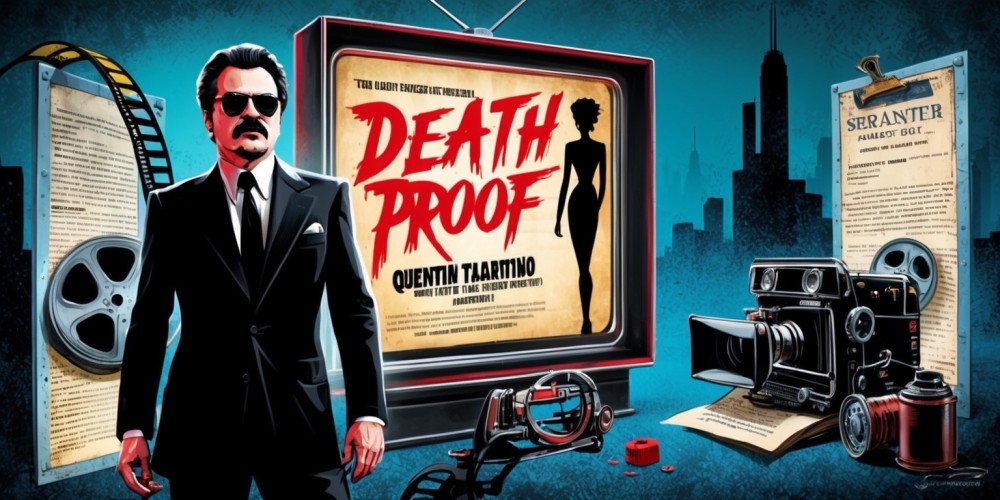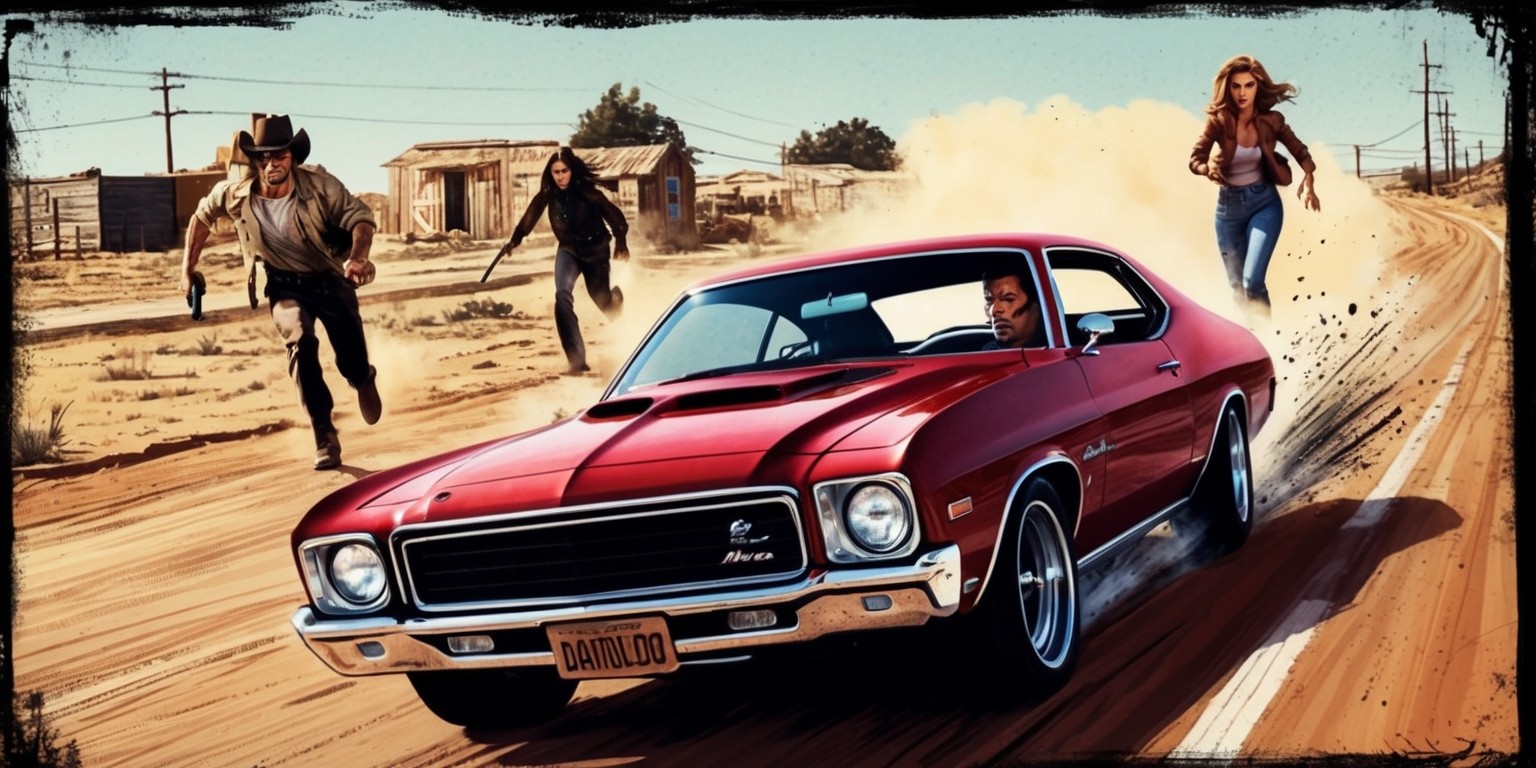The Art of Anticipation: Quentin Tarantino's "Death Proof" as a Masterclass in Cinematic Storytelling
- 2024-11-11 02:00:42

Renowned filmmaker Quentin Tarantino has long been recognized for his unique approach to storytelling, blending violence with intricate dialogue and unexpected twists. In 2007, he made an audacious return to the genre of slasher films with his movie "Death Proof." This film may not have dominated the box office, but it became a cult classic, largely thanks to one unforgettable scene that Tarantino himself heralds as a pivotal moment in his career as a director.
Revisiting a Chilling Theme
"Death Proof" features Kurt Russell as the enigmatic Stuntman Mike, a deranged killer who stalks unsuspecting victims using his souped-up American Muscle car. The film showcases a chilling narrative that unfolds in a series of tense and thrilling moments, weaving a dark tale of survival and horror. As with much of Tarantino's work, beneath the surface, there is a layer of commentary on genre conventions and the nature of cinema itself.
The Thrill of Anticipation
One of the film's most talked-about sequences is a harrowing car chase that plays out like a symphony of dread and excitement. As Stuntman Mike follows the unsuspecting characters Julia, Shanna, and Arlene, the suspense builds tension that keeps viewers at the edge of their seats. This moment encapsulates the essence of Tarantino's expertise in crafting anticipation, a skill he considers one of his paramount contributions to cinematic language.
A Gripping Cinematic Experience
In a recent interview, Tarantino described the emotional and psychological impact of the iconic crash scene. He ingeniously crafted an experience for his audience that adds layers to their engagement with the film. By forcing viewers to witness the lead characters' obliviousness, he draws them into the unfolding chaos, creating a sense of complicity that adds to the shock value when disaster strikes.
Musical Accompaniment For Impact

The use of carefully chosen music amplifies the tension throughout the scene. Tarantino expertly selects tracks that heighten the anticipation before the inevitable crash occurs. As the soundtrack builds, the audience becomes increasingly invested, eagerly awaiting the explosive moment—both thrilling and shocking in its execution.
Analyzing the Horrifying Crash Scene
The infamous crash is crafted with meticulous precision across three pivotal scenes that dissect its intricacies. By alternating between the before, during, and after of the accident, Tarantino captures the moment's depth and the stark reminder of mortality that pervades the storyline. This scene serves not only as a climactic moment but also as a commentary on the fragility of life within the cinematic world.
Chase Scenes: A New Frontier for Tarantino
Throughout his career, Tarantino has embraced a variety of genres and storytelling techniques, yet for “Death Proof,” he ventured into the realm of thrilling chase and action sequences—an area he had previously not fully explored. In discussing his experience, he revealed that the pressure to create a memorable chase scene weighed heavily on him, yet he was determined to rise to the occasion to deliver something truly remarkable.
The Nature of Cinematic Directing
A notable aspect of Tarantino's evolution as a director is his perspective on what defines a "cinematic director." His admiration for action-centric filmmakers led him to push his boundaries and strive for greatness. He contextualizes high-octane action as an essential component of effective storytelling, pondering what it really means to achieve the title of "cinematic director."
Comparative Analysis of Action Directors
In the context of Tarantino’s exploration of genre cinema, he contrasts his approach with that of seasoned action directors. He expresses deep respect for the expertise of directors who excel in crafting exhilarating moments onscreen, believing that they embody the quintessence of cinematic mastery. This revelation highlights his journey towards embracing these elements in "Death Proof."
The Cult Following of Death Proof
Despite the film’s lackluster performance at the global box office, "Death Proof" has found a place as a cult classic among fans of Tarantino and genre cinema alike. Its unique take on slasher tropes, combined with the intoxicating expertise of the legendary director, has allowed it to endure across time and encapsulate the love for cinema that many share.
A Deeply Personal Project
Tarantino's passion for filmmaking is evident in every frame of "Death Proof." With a belief that mediocrity is not an option, he poured his creative vision into the project, striving for a film that would resonate not only with audiences but also with his own standards as a director. This approach connects him more deeply to his work, making it an extension of his artistic expression.
Footnotes of Permission
As viewers analyze the sheer audacity and creativity of "Death Proof," it becomes clear that Tarantino grants audiences permission to indulge in the chaos he orchestrates. By establishing a foundation of suspense, he invites them to inhabit a space where horror and excitement coexist, a ride that demands their consent and engagement.
Critical Reception and Ratings
The responses to "Death Proof" reflect its polarizing nature. While critics gave it a rating of 7/10 on IMDB and an average of 63% on Rotten Tomatoes, the film resonates with a particular audience that appreciates the distinctive Tarantino style. This unique blend of niche appeal and critical examination provides a fertile ground for discussion about the film’s artistic merit.
The Legacy of Death Proof
"Death Proof" is available for streaming on platforms like Prime Video, ensuring that new audiences can discover Tarantino's wild take on cinematic storytelling and action. Its unforgettable scenes and the emotional rollercoaster it provides solidify its position as a noteworthy entry in Tarantino's filmography—one that continues to spark conversation about the evolution of filmmaking, the essence of cinematic journeys, and the art of directing.
A Lasting Impact on Fictional Storytelling
Ultimately, "Death Proof" stands as a testament to Tarantino's growth as a filmmaker and his dedication to pushing the boundaries of conventional cinema. This movie explores complex themes of violence, tension, and the dynamics of storytelling, leaving a lasting mark on the genre and influencing future filmmakers. Its legacy reminds us how the elements of anticipation, thrill, and artistic expression can collide to create something profound within the realm of cinema.





